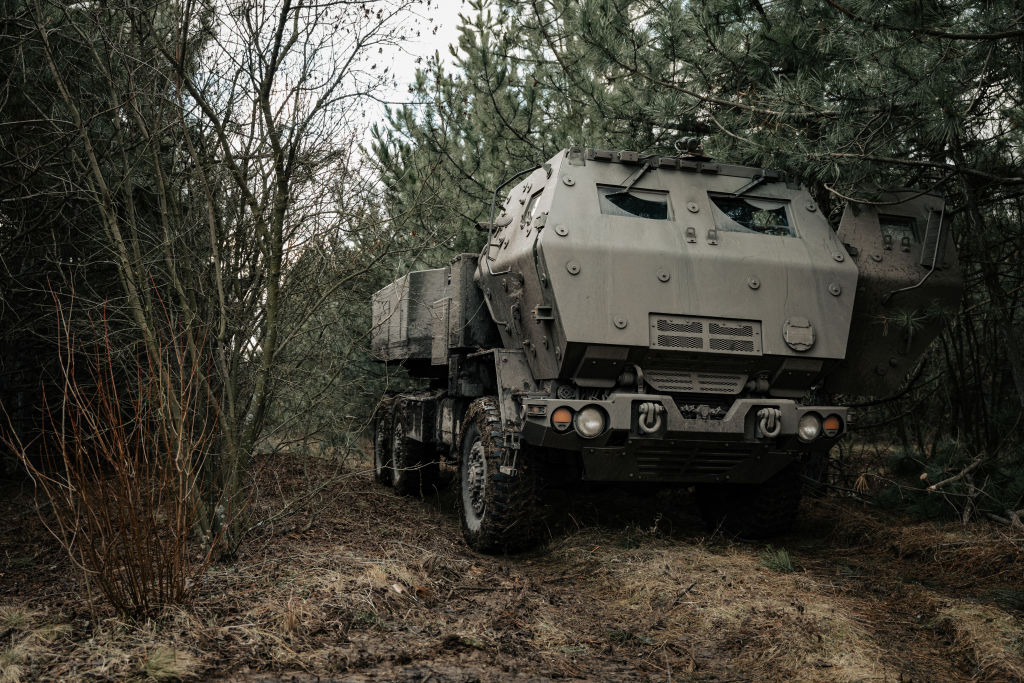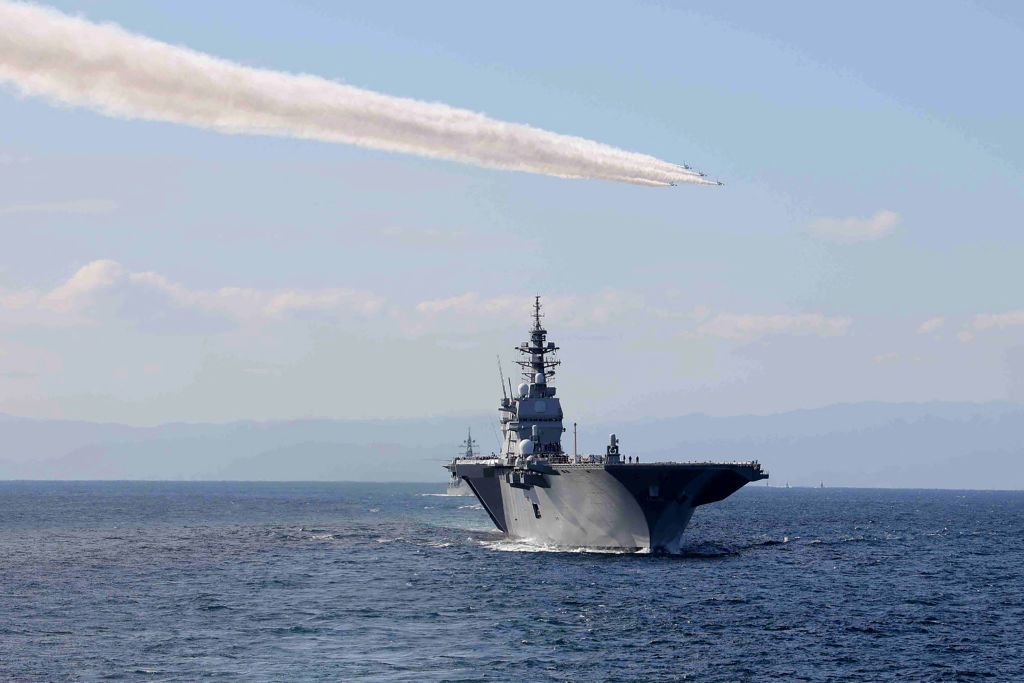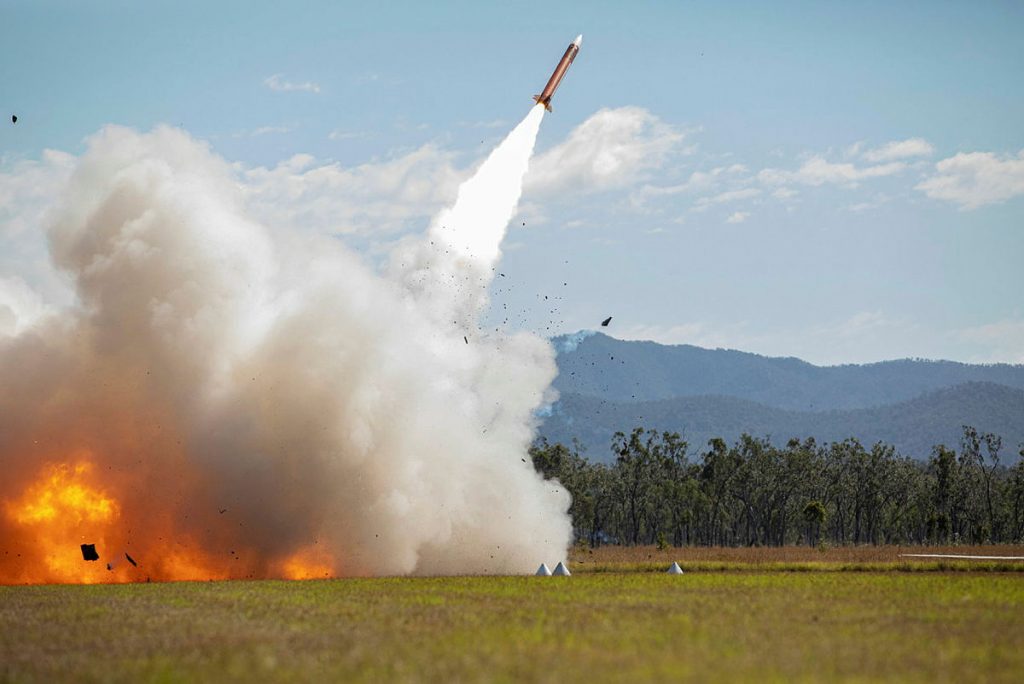It’s (past) time to get serious about funding Australia’s defence and security

In the week of Australia’s 3 May election, ASPI will release Agenda for Change 2025: preparedness and resilience in an uncertain world, a report promoting public debate and understanding on issues of strategic importance to Australia. This is an article from the report.
The National Defence Strategy (NDS), released in April 2024, gave urgent warning that Australia’s strategic circumstances were rapidly deteriorating. It noted that the 2023 Defence Strategic Review (DSR) had warned that ‘Australia faced its most challenging strategic environment since the Second World War’, and that events had worsened since the DSR’s release only 12 months before.
In the 12 months since the NDS hit the streets, the geostrategic environment—and the strategic risks that Australia faces—have not just continued that trajectory, but have exponentially deteriorated, to the point that Australia now faces a global and regional security environment that bears little relationship to the foundational assumptions that the NDS is based on: a rules-based global order and an open, stable and prosperous Indo-Pacific.
China’s growing assertiveness, malicious cyber targeting of political and military systems and civilian ICT networks and adversarial mercantilism have ratcheted up to new levels, demonstrated most vividly by the recent circumnavigation of Australia by PLA Navy Task Group 107 and the no-notice live-fire drills conducted in the Tasman Sea. Beijing has warned that more such visits will occur, and Australian naval experts argue that the Royal Australian Navy is ill-equipped for such an eventuality, with only ‘16 battle-force vessels—its smallest and oldest in decades’.
Russia’s war on Ukraine continues to eat away at the longstanding verities of the international security framework that has underpinned global stability and security in the post–World War II environment. Russia’s continued flouting of the Geneva Conventions, attacking critical infrastructure targets in Ukraine, including nuclear energy plants, kidnapping and forcing of Russian citizenship upon Ukrainian citizens, threats of nuclear war and increasing use of paid or politically motivated agents to undertake sabotage attacks throughout Europe have resulted in an increasing realisation that European security architecture and military capability spending are no longer appropriate and that a more general war in Europe, and potentially globally, is becoming more likely. Prime Minister Albanese has recently ‘opened the door to sending Australian troops to Ukraine’, but military experts suggest that ‘the current operational capability of the defence forces is looking pretty thin.’
And perhaps most consequentially, the new Trump administration has flagged a more selective approach towards traditional alliance relationships, demanding of its allies that they align with US policy and intents and invest in much higher levels of defence spending in order to justify continued US engagement and support. Absent such demonstrations, it’s becoming clear that a stultifying effect will encompass the relationship. In speaking of Australia, Elbridge Colby, the President’s nominee for Under Secretary of Defense for Policy, declared that ‘The main concern the United States should press with Australia, consistent with the President’s approach, is higher defense spending. Australia is currently well below the 3% level advocated for NATO by NATO Secretary General Rutte, and Canberra faces a far more powerful challenge in China.’
And as Mike Burgess AM, Director-General of the Australian Security Intelligence Organisation, noted in his 2025 threat assessment:
Australia has entered a period of strategic surprise and security fragility. Over the next five years, a complex, challenging and changing security environment will become more dynamic, more diverse and more degraded. Many of the foundations that have underpinned Australia’s security, prosperity and democracy are being tested: social cohesion is eroding, trust in institutions is declining, intolerance is growing, even truth itself is being undermined by conspiracy, mis- and disinformation … Australia is facing multifaceted, merging, intersecting, concurrent and cascading threats. Major geopolitical, economic, social and security challenges of the 1930s, 70s and 90s have converged.
In the DSR, Sir Angus Houston AK AFC and Stephen Smith highlighted that ‘Defence planning is about managing strategic risk. Defence spending must be a reflection of the strategic circumstances our nation faces.’ They recommended that:
Defence funding should be increased to meet our strategic circumstances. Lower-priority projects and programs should be stopped or suspended to free essential resources which can be allocated to projects and programs that align with the priorities in the Review. Funding should be released through the rebuild and reprioritisation of the Integrated Investment Program (IIP) and reinvested into priority Defence projects, programs and activities consistent with the Review.
Against the complex, interconnected and existential threat environment Australia now faces, the next government must seriously consider whether the funding commitments, set out in the NDS and the Defence Portfolio Budget Statements meet the threshold test of the DSR that spending reflect the strategic circumstances Australia now faces. And, noting that the NDS quite clearly states that Australia no longer enjoys the benefit of a 10-year window of strategic warning time for conflict, and that the ADF is not fully fit for purpose, whether we have the appropriate balance between investing in the future (with initial operating capabilities for many of the current IIP projects coming due in the 2030s through 2050s) or preparing for the present (investing in the readiness and sustainability of current units and platforms, and undertaking rapid acquisition of improvements to the force-in-being).
In ASPI’s The cost of Defence: ASPI defence budget brief 2024–2025, we suggested that the answer to those two fundamental questions was ‘No’. Justin Bassi, ASPI’s Executive Director, categorically stated that:
Australia needs to spend more on defence—and it needs to do so immediately. The strategic imperative has been firmly established in the government’s own major defence documents. The Albanese government and the Coalition opposition agree that we are in the gravest geopolitical period in generations, and this is only going to intensify … the rhetorical urgency is not being matched by action in the form of defence investment … This year’s budget priorities are not directed towards strengthening the Australian Defence Force’s ability to fight in the next decade.
In the 2024–25 Budget, the government noted that Defence funding as a proportion of GDP would reach 2.3% by 2033–34. The majority of that funding is backloaded to the period beyond the forward estimates (out to 2027–28). In essence, Defence is receiving no additional funding for the next three years, which, as The cost of Defence noted, is a holding pattern that leaves us critically exposed to events in the near term and results in preparedness and readiness levels well below any real ability to hold an adversary at risk for a meaningful period. The RAN has mothballed major and minor combatants to meet urgent personnel and funding challenges in other parts of the fleet, including the two Supply-class fleet replenishment oilers being out of service for an extended period (the need for a supply ship was clearly demonstrated by the PLA Navy’s recent circumnavigation, which couldn’t be followed continuously by the RAN). Meanwhile, the Australian Army is downsizing its armoured combat vehicle aspirations, and RAAF flying hours have contracted.
Raising Defence spending to at least 3% of GDP is a strategic necessity. Doing so will help to assuage US concerns regarding our continued commitment to the alliance and help meet the Trump administration’s priorities, as the previous Chief of the Defence Force and DSR author, Sir Angus Houston AK AFC, stated, ‘[President Trump] might say increase our GDP defence spend to 3.0 per cent, but I don’t think that is a bad thing.’ More importantly, it is necessary for Australian security to deliver the necessary cash injection and funding certainty for Defence (and defence industry) to focus on the preparedness of the force-in-being, as the previous Secretary of Defence, Dennis Richardson AC, noted: ‘we must raise to 3 per cent [of GDP defence spending] to do this, because the only other way to do this is to cannibalise our other Australian Defence Force capabilities.’
The NDS states that the new strategy of denial at the heart of Australia’s national defence focuses on ‘deterring a potential adversary from taking actions that would be inimical to Australia’s interests and regional stability’. In the current geostrategic environment, no potential adversary is going to be deterred by a paper ADF that won’t exist until well into the 2040s and 2050s. Moreover, no potential adversary will be deterred by a ‘business hours’ ADF that does not maintain credible capability for 24/7 defence of its own territory and exclusive economic zones, including in the Southern Ocean and Antarctica. A substantial investment in the preparedness—readiness and sustainability—of the ADF is mandatory if we intend to deter the actions of aggressive nations, which can rehearse their kinetic and non-kinetic offences in Australia’s own backyard and in our ICT networks. The immediate security of Australia and the safety of our citizens, including those travelling in civilian airliners across the Tasman or into Asia, necessitate that we can undertake real-time surveillance and reconnaissance and, if necessary, active, defensive and offensive counterattack measures.
Moreover, we must have not just the ability to ‘change a potential adversary’s risk assessment and therefore decision-making calculus’ by imposing cost on that adversary, but also the ability to absorb the costs of successful adversary actions aimed at Australia, whether they be economic, psychological, political or military. National preparedness—a strategic and systematic process to plan, coordinate and integrate resources and efforts across all sectors of government, the economy and society to ensure that the nation is ready to manage potential disasters, emergencies or national-security threats—does not yet exist in Australia. While the NDS makes a strong argument for the need for ‘a coordinated, whole-of-government and whole-of-nation approach [that] harnesses all arms of Australia’s national power to establish a holistic, integrated and focused approach to protect our security and advance our interests’, the Budget doesn’t allocate any resources to make Australia’s national preparedness and resilience real.
It’s long been axiomatic in Defence rhetoric, but not in Defence’s reality, that Defence must ‘structure for war and adapt for peace’. A decade ago, David Peever and his First Principles Review team flagged that Defence was not fit for purpose and proposed an ambitious agenda to reform Defence’s decision-making and processes to deliver on the outcomes required of it. All of the 76 recommendations of the review were ticked off by Defence, and yet, a decade later, the DSR again found that Defence was not fit for purpose. The NDS devotes a chapter to the ‘reform agenda’, and yet strategic and acquisition reform still eludes Defence. If Defence’s spending does rise to 3% of GDP, it will be essential that we have a Defence Department that’s able to spend that money efficiently and create substantially more combat power per dollar invested than the current organisation can deliver. Recent Senate Estimates testimony, recruitment woes and acquisition challenges highlight that there’s much work still to be done to structure Defence for the uncertainties of our present, let alone the potential wars of our future.
We recommend to the next government that it undertakes four immediate actions following the next federal election.
—In the 2025–26 Budget, commit to increased funding of the defence budget to bring Australian defence funding to 3% of GDP by no later than 2026–27 and sustain that level over the next decade.
—Direct Defence to review the planned update to the NDS and the IIP, scheduled for release in 2026, with the aim of prioritising the readiness and sustainability of the current force-in-being, necessary for the 24/7 defence of the Australian theatre and our region.
—In the 2025–26 Budget, commit to funding national preparedness and national resilience measures across government, the economy and society that will ensure Australia is ready to manage potential national-security crises.
—Deliver, within three months of the election, with full implementation over the following 12 months, a public reform plan, as laid out in the DSR, to streamline procurement processes, enhance project management, reduce redundant spending and strengthen domestic defence manufacturing.










